Are you looking for an alternative to the standard Mediterranean cruise? If so, why not take an Adriatic cruise from Venice to the Greek islands?
Read on for my essential tips for cruising the Adriatic Sea, port guides and a comprehensive review of my experience onboard MSC Sinfonia. My one-week itinerary had five ports of call: Split, Dubrovnik, Santorini, Mykonos and Ancona.
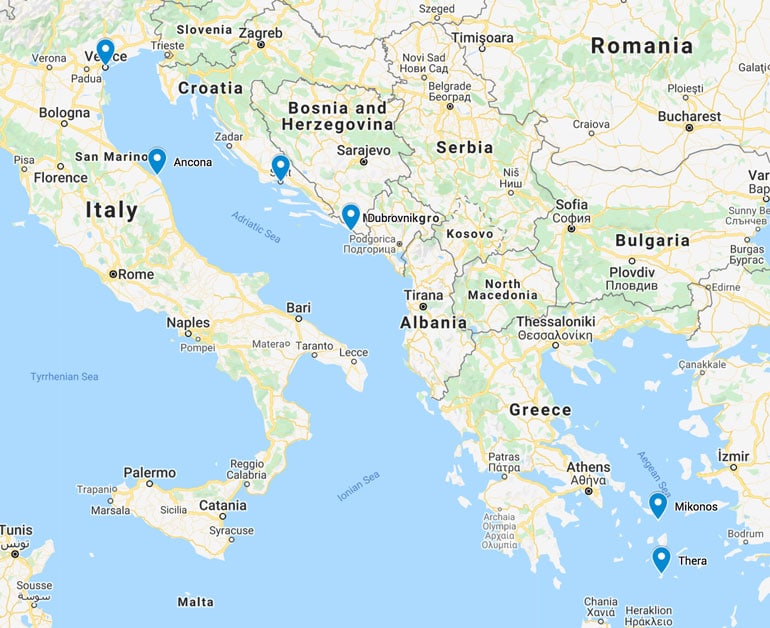
My Top Adriatic Cruise Tips
1. AIM TO CRUISE IN JUNE OR SEPTEMBER
The Adriatic cruise season typically starts at Easter and runs until October.
The Adriatic Sea is calmer during these months and less prone to thunderstorms and high winds that can make navigation hazardous. It is also warmer at this time of year and the islands are open for business.
However, unless you are confined to the school holidays, I would avoid the peak season in July and August. Searing Mediterranean heat and jostling crowds are never a good combination. You will also pay more to cruise in these months.
In my view, the ideal time of year to take an Adriatic cruise is June or September, when the weather is more predictably good and crowds are fewer. That said, I took an Adriatic Sea cruise in October and, for the most part, the temperature was balmy but not oppressive.
2. DO A LITTLE HOMEWORK TO PICK THE BEST ADRIATIC CRUISE FOR YOU
There is considerable variety in itinerary lengths, ports of call and types of ship.
The duration of Adriatic Sea cruises generally ranges from seven to 14 days. As with all cruises, you need to think about the ports of call.
Some itineraries concentrate on the Balkan peninsula. They will include stops at ports on the mainland and, usually in the case of smaller ships, at some of the 1,300 islands dotting the Adriatic Sea. These ports include Zagreb, Zadar, Sibenik, Split, Hvar, Dubrovnik, Kotor.
Other cruise operators offer itineraries that include Italian ports, including Ravenna, Bari and Ancona. Many of the mainline cruise operators will also throw in a few Greek ports of call for good measure, including Piraeus (for Athens), Santorini, Mykonos and Corfu.
Check out the available Adriatic cruise itineraries to see which combination of ports is the right one for you.
Also, consider where your cruise starts.
For example, many sail from Dubrovnik or Venice. Sailing into and out of Venice used to be an unforgettable experience, offering you a unique perspective of the city’s landmarks. However, following a decree signed by Italian ministers in 2021, cruise ships are no longer allowed to sail into Venice’s historic city centre.
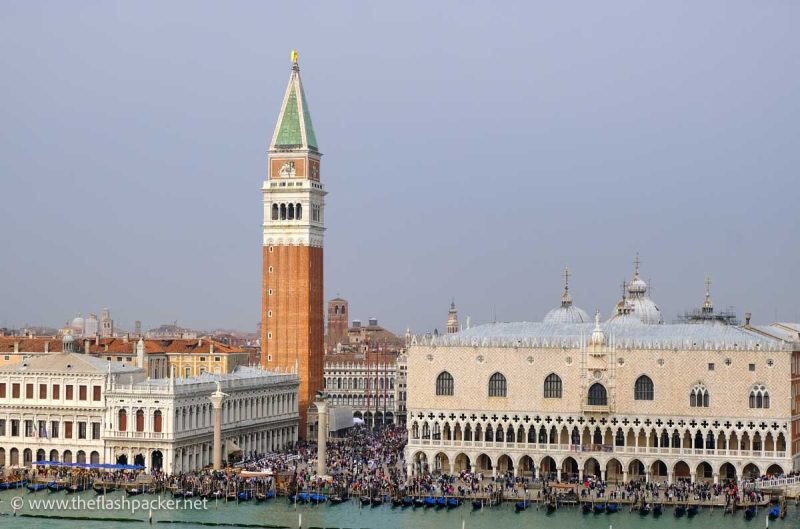
There is a spectrum of ships that sail along the Adriatic Sea, accommodating all budgets, from mainstream behemoths to smaller ships offering a more intimate experience (and that berth at some of the smaller islands). Again, just pick the one that is the right fit for you.
3. PACK APPROPRIATELY
Except for the extreme ends of the booking season, the weather in this region is predictably warm. This makes packing easy.
For exploring the ports of call, wear t-shirts with shorts, linen trousers/chinos or skirts. I also like to pack a few easy-to-wear cotton summer dresses.
For cooler days and evenings, pack a jumper or lightweight jacket. If you are travelling to the Adriatic in April / May or late September / October, predict unpredictability and stuff a few more warm layers in your suitcase.
Ditch the stilettos for sensible walking shoes or trainers. And don’t forget your glad rags for the formal evenings on board!
Pack an umbrella at any time of year in case of unexpected downpours.

4. BOOK A BALCONY CABIN
Selecting the right cabin is an important part of planning a cruise. I recommend booking a balcony cabin when cruising the Adriatic Sea to the Greek islands.
Unlike some cruises, part of the appeal of an Adriatic cruise is the scenery as you sail by. And where better to take in the view than on your private balcony, sipping on an Aperol Spritz?
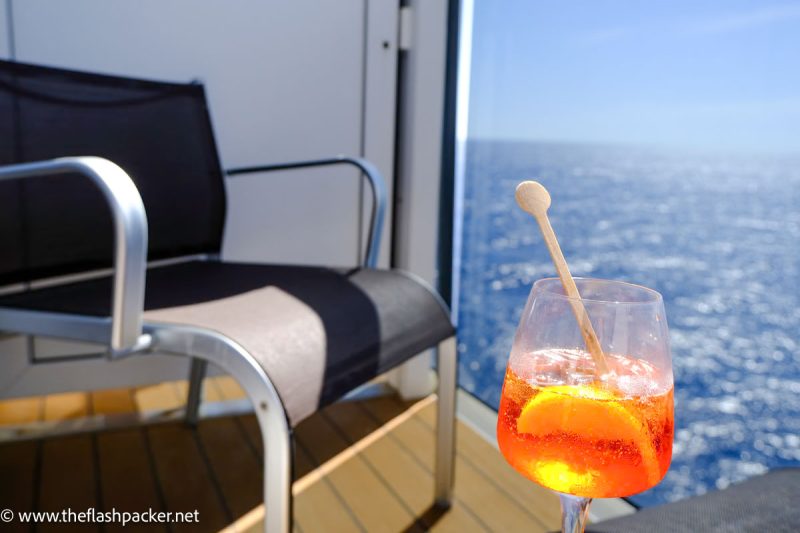
However, I suggest that you take a look at your cruise itinerary before deciding on the type of cabin. If this is port-intensive with few days at sea, this may not be a worthwhile investment.
A final cautionary note: not all cruise cabins are equal. Therefore if you don’t want to end up under the promenade deck or next to the laundry, research your cruise cabin before you book.
Adriatic Sea Cruise Ports & Itinerary
DAY ONE: LEAVING VENICE
Not off to the best of starts. Due to restrictions on departure time from Venice, our scheduled time of 16:30 was put back almost three hours. At 19:15, MSC Sinfonia released her moorings and set sail through the Guidecca Canal.
We should have been able to see the city’s iconic landmarks as we sailed past, including the Cathedral of San Marco. But as the sun had well and truly set by the time we reached St Mark’s canal, we couldn’t and we didn’t.
The ship then continued towards Split, our first destination, 218 nautical miles southeast of Venice.
DAY TWO: SPLIT, CROATIA
Split, Croatia’s second-biggest city, is one of the oldest settlements along the Adriatic coast, thought to be at least 1700 years old.
The jewel in Split’s crown is its old town, once home to Diocletian’s Palace. Built by the eponymous Roman Emperor in the 4th Century, this area is now a seductive tangle of churches, chapels and houses.
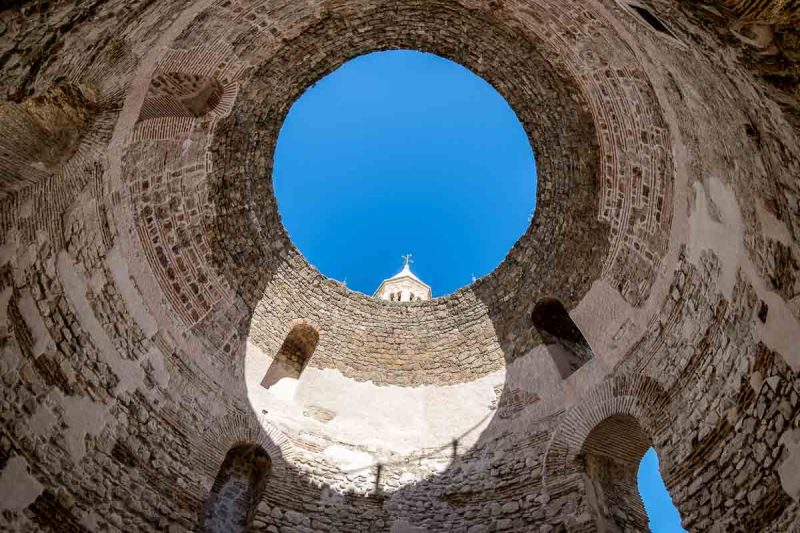
When you’ve had your fill of the town’s rich history, escape the crowds in Split and walk along the Marjan Peninsula.
Walk for ten minutes along Riva, Spilt’s café-lined, seafront promenade, until you reach a set of stone steps. From here, it’s an easy uphill climb to the Vindlica viewpoint and its panoramic view of the old town.
MSC Sinfonia berthed at Split’s port, a ten-minute walk along the quayside from the old town.
You should not need to use public transport within Split. As the city’s main attractions are scattered over a compact area, everything is walkable.
DAY THREE: AT SEA
Continuing on her south-easterly route in the Adriatic Sea, MSC Sinfonia crossed the Splitska Vrata Canal between the islands of Brac and Solta. A relaxing day at sea, skirting the eastern coast of Italy from Brindisi to Cape D’Ortranto. and passing Kefalonia and Zakynthos.
Balcony seat, a good book and a glass of wine in hand.
DAY FOUR: SANTORINI & MYKONOS, GREECE
Welcome to Santorini, the poster child of the Greek islands. One of the most photographed places on the planet, this striking island is quintessential Greece.
Traditional churches with blue domes teeter on the edge of the volcanic caldera. Whitewashed houses tumble in waves down the vertiginous cliffside until they reach the Gulf of Santorini below.
There’s even the occasional photogenic cat.

The neighbouring island of Mykonos is famed for its nightlife against the backdrop of stunning beaches and its numerous windmills, vestiges of a bygone age when they ground the wheat for bread-making.
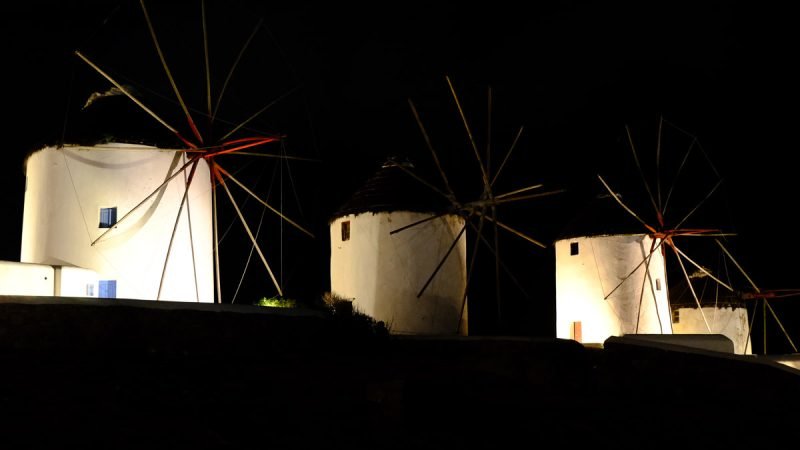
DAY FIVE: AT SEA
Leaving Mykonos in the wee small hours of the morning, MSC Sinfonia started on her 600 nautical mile journey to Dubrovnik.
DAY SIX: DUBROVNIK, CROATIA
One of the jewels in Croatia’s crown, the extravagantly gorgeous UNESCO World Heritage Site of Dubrovnik is instantly enchanting.
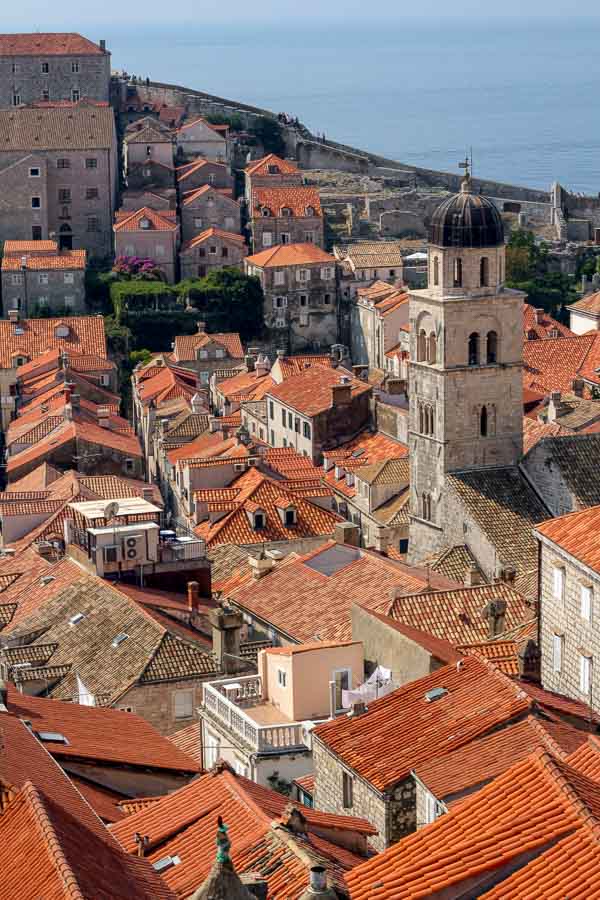
Its beauty and historical heritage have always attracted visitors but since Dubrovnik became one of the settings for HBO’s Game of Thrones, its tourist numbers have exploded.
DAY SEVEN: ANCONA, ITALY
Poor old Ancona hasn’t had the happiest of histories.
The capital of Italy’s Le Marche region was pounded by bombs in WWII and then devastated by an earthquake in 1972. Despite this, it does boast a few historic sights, including a 12th Century cathedral, and is home to an art gallery and the region’s archaeological museum.
However, I suggest that you set your sights further afield and use this Adriatic cruise stop as an opportunity to visit the gorgeous medieval city of Urbino. This UNESCO World Heritage site was the cultural capital of the Italian Renaissance in the 15th and 16th centuries and is the birthplace of one of the greats from this period, Raphael.
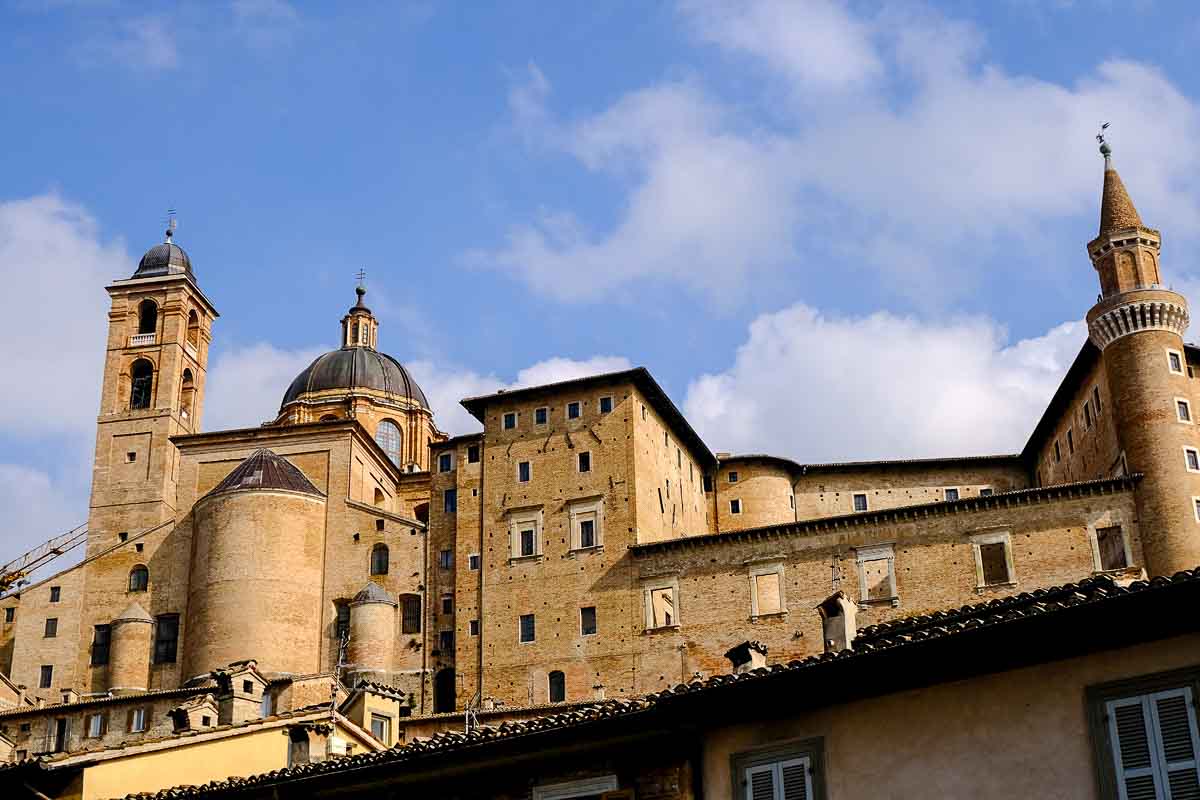
DAY EIGHT: ARRIVAL BACK IN VENICE
This cruise didn’t have a happy ending for many passengers.
Thick fog forced the closure of the Port of Venice, putting back our arrival time of 08:00 to 13:30. Hope slowly ebbed away from those who had a lunchtime flight out of Venice’s Marco Polo Airport.
MSC responded well to this delay, keeping the buffet restaurants and bars open until passengers had disembarked.
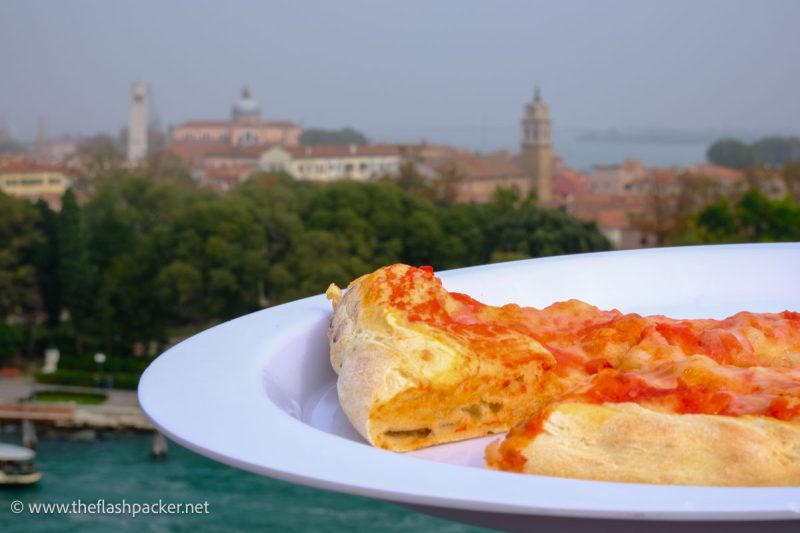
My Experience Onboard MSC Sinfonia: Ship Review
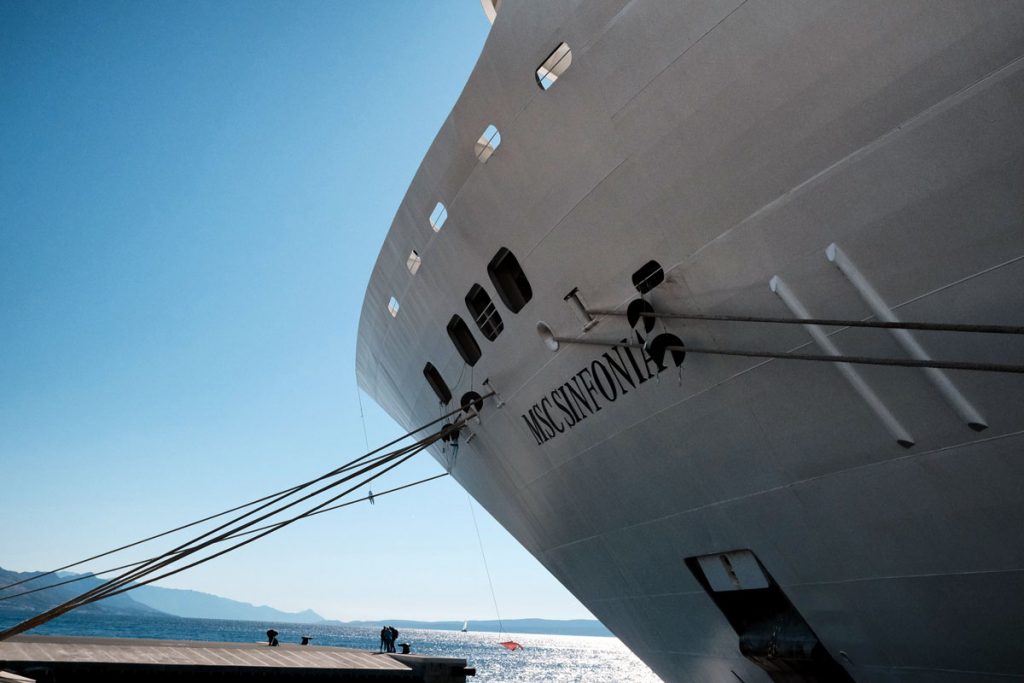
Built in 2002, and refitted in 2015 to the tune of $200 million, MSC Sinfonia has an elegant and contemporary design. Spread over 13 decks, nine of which are for passengers, she is 32 meters wide and 275 meters long and weighs over 66,000 tonnes.
Unlike many other ships in this price bracket, MSC Sinfonia does not feature a show-stopping central space. Instead of a glitzy chandelier dangling from a great height, there is the use of more restrained primary and neutral colours with touches of marble, brass and glass.
Although getting acclimatised was easy, I found it frustrating that only the forward and aft elevators and stairwells reached all decks.
MSC Sinfonia had 721 crew members for its maximum of 2,679 guests, a higher passenger-to-staff ratio than other ships on which I have sailed. This was reflected in its levels of customer service, but more about that later.
EMBARKATION AT THE PORT OF VENICE
Question: how many queues do you need to join to board an MSC cruise ship in Venice? Answer: four.
Queue #1 to deposit your luggage. Queue #2 to receive your embarkation card. Queue #3 to have your hand luggage scanned and to embark. Queue #4 to have your photo taken for your cruise card.
And I thought that it was the British who loved a queue.
There were a few other aspects of the embarkation process that were surprising:
- At no stage were we asked to complete a health questionnaire to identify if we had an infectious disease
- Credit card details were not required at this stage of the cruise (and registering your card on-board was optional)
- My cruise pass was not handed to you but placed in the cabin
All that said, my cabin was ready, the luggage delivered and the cruise pass primed and ready to go within 15 minutes of boarding. Probably because we had been queuing for so long.
MSC SINFONIA BALCONY CABIN
I had a balcony cabin, which was decorated in tasteful burgundy and gold tones, complementing the beech-veneered walls. The large, comfortable bed had good quality linen and a choice of pillows (soft or firm).
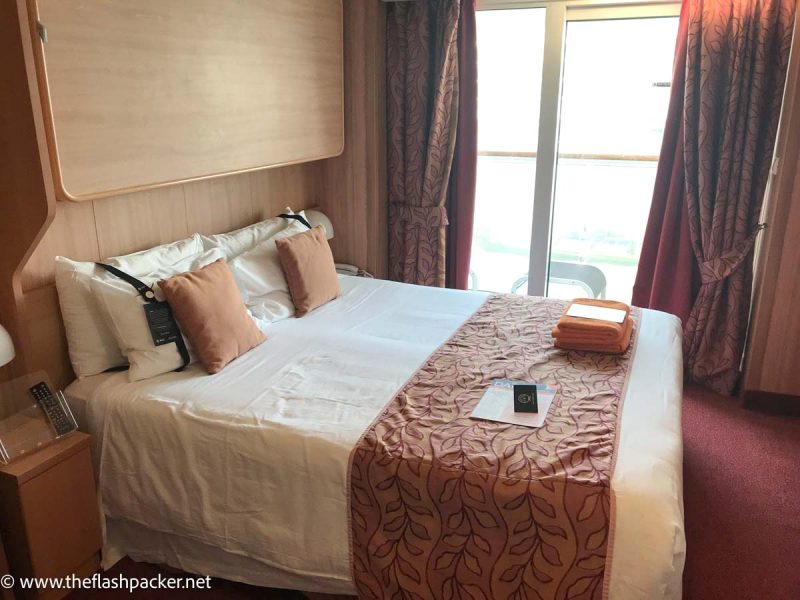
In contrast to balcony cabins on P&O or Celebrity Cruises or when I sailed on NCL Epic, this was a small space and did not have a sitting area with a sofa and desk. Whilst this is perfectly adequate for a solo traveller on a cruise, two people sharing this cabin for a week might struggle.
Lighting in the cabin was good with overhead, bedside and vanity unit lights. The small TV had a limited choice of channels. There were two-pin EU and US plug sockets.
It took me three days to locate the cabin’s safe, cunningly hidden behind the vanity unit’s mirror!
A small fridge housed the cabin’s mini-bar, but there was no kettle. The following items were also not provided: tissues, a bathrobe, slippers and an umbrella.
Storage space was perfectly adequate for one person but, again, two people might struggle. There were no wall-mounted hooks which are a useful feature of cabins on other cruise lines.
The small bathroom had limited storage space and soap, shower gel and shampoo were provided in refillable dispensers. Bring your hairdryer from home as the one provided is one of those nasty wall-mounted contraptions that resemble vacuum cleaners.
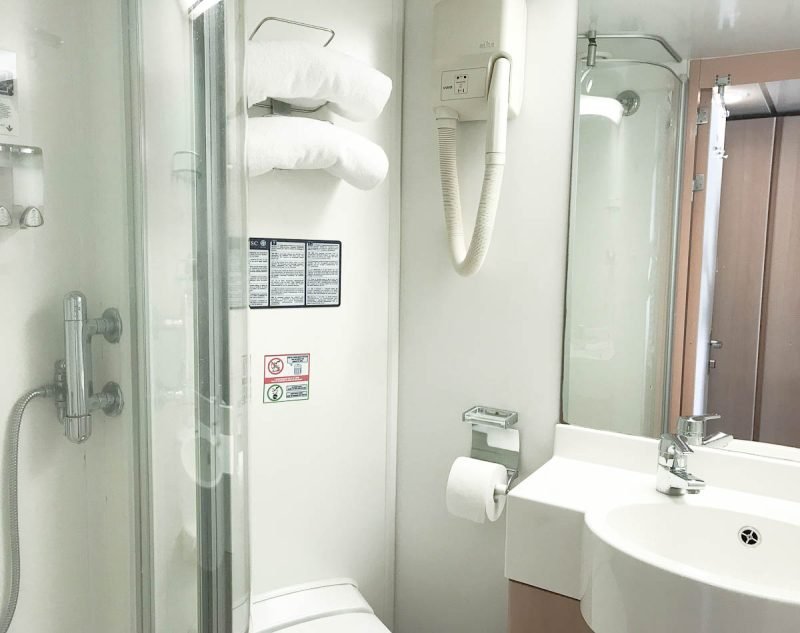
A major plus point is that there is a proper shower cubicle, not just a shower tray with a nasty nylon curtain.
The balcony was a decent size, accommodating two reclining chairs and a small table.
FOOD AND DRINK
There are 11 bars on MSC Sinfonia to choose from, each with a theme. None of them had the wow factor for me.
One of the largest bars is the gloomy Shelagh’s House, which is the ship’s Irish pub.
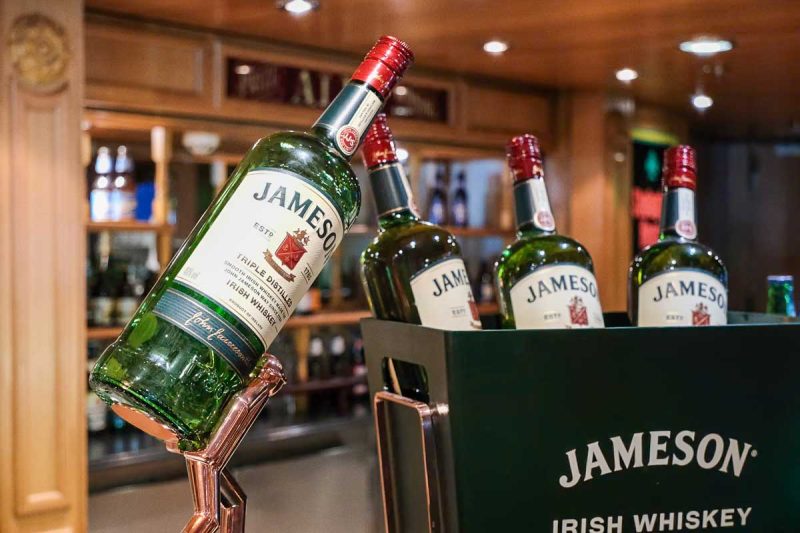
The Buddha Bar, Sinfonia’s piano bar located on deck 6 was less oppressive.
Unusually, there was no speciality dining on MSC Sinfonia. Instead, there was the option to purchase upgraded menu items in the main dining room.
The food in the main dining room was consistently good and occasionally very good. The food from the buffet service for lunch and dinner at La Terazza Buffet was acceptable but unexceptional.
Breakfasts were OK, but freshly cooked options were limited. The one omelette station was manned by one member of staff, resulting in considerable queues.
As you might expect from an Italian cruise company, the barista-prepared coffee was excellent. You just needed to be prepared to wait for it.
RELAXING ON DECK
There was a busy main pool with the Doremi Spray Park on deck 11. Pool towels were provided in the cabin.
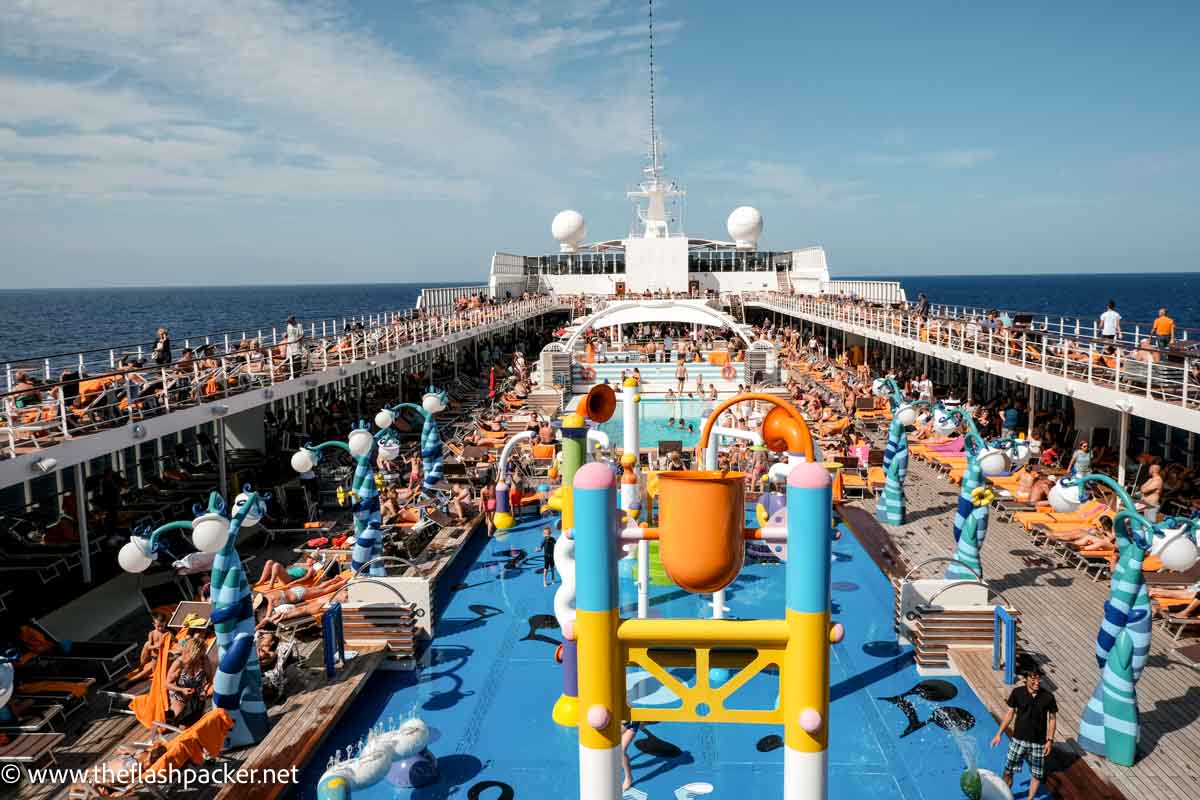
There was also a power walking track and a small gym.
Mini golf and shuffleboard were available at the aft of the ship on deck 13.
ENTERTAINMENT ON MSC SINFONIA
The entertainment programme was so underwhelming that I did not attend any of the shows in the ship’s cramped theatre. There was a slightly odd system whereby, for some shows, you needed to pre-book your place using one of the ship’s touch screens (which did or did not work).
Also underwhelming was the ship’s programme of activities. Don’t expect cultural immersion or art classes. Instead, daily activities centred on games and fitness with the odd trivia quiz thrown in.
MSC CUSTOMER SERVICE
This is where MSC Sinfonia failed, often spectacularly.
Although a few of the staff were friendly and welcoming, too many others were disinterested, bordering on contemptuous. Long waits to be served in the ship’s bars and restaurants were unacceptable, and this may be a reflection of its staffing levels.
However, the icing on the cake was the overcharge on the final bill. I was charged for drinks when I had a drinks package. There was a charge for the all-day shuttle bus at Dubrovnik where I used public transport.
And if that’s not bad enough, this charge was for two people when I had sole occupation of the cabin! How does that work?
Although I remain very cynical about the charge for the shuttle bus, I accept that mistakes can be made. But if these are rectified with grace, a smile and an apology they can be forgiven.
As you might have guessed by now, this was far from the case on MSC Sinfonia. Nothing approaching an apology, let alone a smile, passed the Guest Services assistant’s tightly pursed lips.
Worse still, mine was not an isolated experience. Fellow passengers reported similar issues but others, looking at the length of the queue snaking through the Guest Services area of the ship, gave up the fight.
FELLOW PASSENGERS
MSC is the Eurovision of cruise lines. Expect a cosmopolitan crowd onboard.
The majority of passengers were Italian but there were also British, French, Spanish and German passengers.
Consider a cruise on MSC as an opportunity to hone your foreign language skills by tuning into the multilingual tannoy announcements. The downside of accommodating a plethora of languages is that it feels like the mandatory emergency drill goes on for a week.
Adriatic Sea Cruise on MSC Sinfonia: The Good, The Bad and The Downright Ugly
Sailing with MSC is a mid-range budget cruise experience. It cost just over £2,000 for the week’s cruise and return scheduled flights with British Airways from London.
This was a good itinerary, with diverse ports of call, each of which had something different to offer. My one regret is that we only stopped in Mykonos at night. With hindsight, I would have looked for an itinerary that would have allowed me to explore the island during daylight hours.
The ports of call were very busy, especially Santorini, which was challenging at times. I’m very glad that we didn’t decide to take this cruise in July / August when it is reportedly tourist carnage.
MSC Sinfonia is an elegant ship, although it felt a little claustrophobic in places, and a few design aspects were frustrating. The cabin was comfortable, albeit small.
Food was generally of good quality.
However, the poor customer service I experienced means that it is unlikely that I will cruise with MSC again. I had a great time despite them, which is a sad indictment.
Thank you for reading my Adriatic cruise guide
If you have found this article helpful, take a deeper dive into the stops on this cruise:
- Exploring Diocletian’s Palace in Split
- Croatia Off the Beaten Path in Split, Croatia
- Should You Visit Santorini on a Cruise?
- A War Walk in Dubrovnik: A Scarred Beauty
- A Day in Urbino, Italy: A Renaissance Gem
Finally, if you are new to cruising, I also have advice on how to pick your first cruise and which cruise cabins to book, as well as advice on solo staterooms if you are cruising alone.
Happy sailing!

About Bridget
Bridget Coleman has been a passionate traveller for more than 30 years. She has visited 70+ countries, most as a solo traveller.
Articles on this site reflect her first-hand experiences.
To get in touch, email her at hello@theflashpacker.net or follow her on social media.
